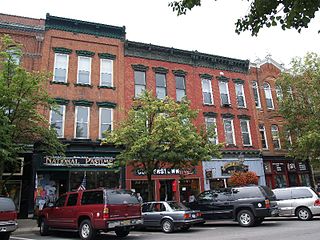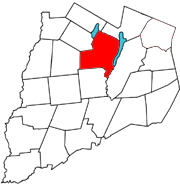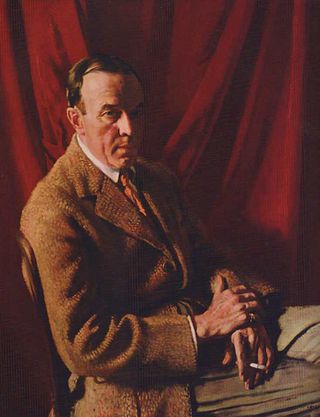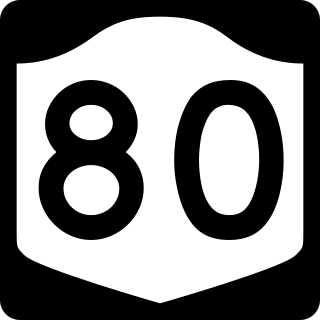
Otsego County is a county in the U.S. state of New York located within the Mohawk Valley Region. As of the 2020 census, the population was 58,524. The county seat is Cooperstown. The county's population center is Oneonta. The name Otsego is from a Mohawk or Oneida word meaning "place of the rock."

Cooperstown is a village in and the county seat of Otsego County, New York, United States. Most of the village lies within the town of Otsego, but some of the eastern part is in the town of Middlefield. Located at the foot of Otsego Lake in the Central New York Region, Cooperstown is approximately 60 miles southwest of Albany, 67 mi (108 km) southeast of Syracuse and 145 mi (233 km) northwest of New York City. The population of the village was 1,794 as of the 2020 census.

Otsego is a town in the north-central part of Otsego County, New York, United States. The population was 3,641 at the 2020 census. The town is named after Lake Otsego, which forms part of the town's eastern border.

James Fenimore Cooper was an American writer of the first half of the 19th century, whose historical romances depicting colonial and indigenous characters from the 17th to the 19th centuries brought him fame and fortune. He lived much of his boyhood and the last fifteen years of life in Cooperstown, New York, which was founded by his father William Cooper on property that he owned. Cooper became a member of the Episcopal Church shortly before his death and contributed generously to it. He attended Yale University for three years, where he was a member of the Linonian Society.

Otsego Lake is a 4,046-acre (16.37 km2) lake located in Otsego County in the U.S. state of New York. It is the source of the Susquehanna River and largest lake in Otsego County. The Village of Cooperstown is located at the lake's southern end. Glimmerglass State Park is located on the lake's northeastern shore, and includes Hyde Hall, a large mansion constructed in 1817, that overlooks the lake. The Glimmerglass Opera, opened in June 1987, is located on the western shore.

Glimmerglass State Park is a 593-acre (2.40 km2) state park located north of Cooperstown, in Otsego County, New York. Most of the park is located inside the Town of Springfield.

William Cooper was an American merchant, land speculator and developer, the founder of Cooperstown, New York. A politician, he was appointed as a county judge and later served two terms in the United States Congress, representing Otsego County and central New York. He was the father of James Fenimore Cooper, who became a noted writer of historical novels related to the New York frontier.
David Shipman is generally considered to be the real-life inspiration for James Fenimore Cooper's character Natty Bumppo in the Leatherstocking Tales along with a pioneer man named Thomas Leffingwell, a co-founder of Norwich, CT, whose son founded the Leffingwell Inn, now a museum. When Cooper's father Judge William Cooper settled in what is now Otsego County, New York in the mid-1780s, Shipman lived alone in a small cabin in the hills south of the village of Cooperstown, a squatter on the land of Cooper's neighbor John Christopher Hartwick.

Stephen Carlton Clark was an American art collector, businessman, newspaper publisher and philanthropist. He founded the Baseball Hall of Fame in Cooperstown, New York.
Edward Severin Clark was an American businessman, and the owner of the New York City apartment building The Dakota.

New York State Route 80 (NY 80) is a 127.32-mile-long (204.90 km) west–east New York State Route located within Onondaga, Madison, Chenango, Otsego, Herkimer, and Montgomery counties in New York. Its western terminus is located at a junction with NY 175 in the city of Syracuse in Onondaga County, from which it actually runs in a north–south direction for 20 miles (32 km). The eastern terminus is located at a junction with NY 5 in the village of Nelliston in Montgomery County. The route is signed north–south from U.S. Route 20 (US 20) north to NY 5.

The Farmers' Museum is located in Cooperstown, New York, and is one of the best-known attractions in the town.
John Brewster Jr. was a prolific, Deaf itinerant painter who produced many charming portraits of well-off New England families, especially their children. He lived much of the latter half of his life in Buxton, Maine, USA, recording the faces of much of Maine's elite society of his time.

Queena Stovall was an American folk artist. Sometimes called "The Grandma Moses of Virginia," she is famous for depicting everyday events in the lives of both white and black families in rural settings.

Otsego Hall was a house in Cooperstown, New York, United States built by William Cooper, founder of the town. Construction started in 1796 and was completed by 1799 in the Federal style. For many years, it was the manor house of Cooper's landed estate, and was one of the largest private residences in central New York. Cooper had moved his family to the settlement in 1790, and his son James Fenimore Cooper, who became an author, also lived in the house.

Mercedes of Castile; or, The Voyage to Cathay is an 1840 historical novel by James Fenimore Cooper. The novel is set in 15th-century Europe, and follows the preparations and expedition of Christopher Columbus westward to the new world.
Pierstown is a hamlet located on CR-28 north of Cooperstown and west of Five Mile Point in the Town of Otsego, in Otsego County, New York, United States.

Henry Spotswood Fenimore Cooper was a writer and local environmentalist. He was a longtime contributor to The New Yorker, predominantly covering NASA's space program. Cooper also wrote eight books about space exploration throughout his lifetime. He was a noted chronicler of events at the Century Association, a private club in New York City.
Eugene Victor Thaw was an American art dealer and collector. He was the owner of an art gallery on Madison Avenue in Manhattan, and a past president of the Art Dealers Association of America. With his wife, Clare, he donated over 1,000 works of art to the Fenimore Art Museum and the Morgan Library & Museum.















